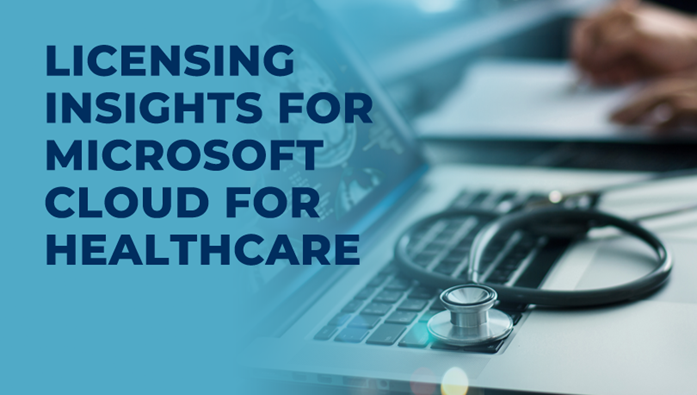A number of big tech companies are increasing their focus on healthcare, including Amazon, Apple, Alphabet and others. Another big name on the list is Microsoft. Microsoft is no stranger to investing R&D dollars in healthcare solutions, but its latest result – Microsoft Cloud for Healthcare – is certainly its most ambitious.
Microsoft Cloud for Healthcare is an end-to-end industry specific cloud solution that includes capabilities which come to life in Microsoft Azure, Microsoft 365, Dynamics 365 and Power Platform with a common data model. It is built on the foundation of security and compliance, and the Microsoft partner ecosystem extends the value of this platform with custom-built solutions for healthcare.
Microsoft aims to do what continues to be difficult for many healthcare organizations – turn insights into action. It delivers automation and efficiency on high value workflows and as well as data analysis functionality for both structured and unstructured data. Microsoft Cloud for Healthcare also includes capabilities to manage healthcare data at scale. This makes it easier for healthcare organizations to improve patient experience, coordinate need care and drive operational efficiency while helping to support end-to-end security compliance and interoperability of healthcare data.
Embracing and Accelerating Change in Healthcare Delivery
Microsoft Cloud for Healthcare debuted in Fall 2020 just as the healthcare industry was being forced to accelerate transformation. Patient dissatisfaction with healthcare experiences had long been a systemic issue, with more than 80% of patients expressing dissatisfaction. But the pandemic forced healthcare providers to give patients more agile access to care and better customized experiences. Does the patient want to receive text messages? Do they prefer to deal with a bot for some issues? Microsoft Cloud for Healthcare addresses this by offering a customized engagement model.
To do that, healthcare organizations have had to up their security and compliance game. The global healthcare industry loses $6.2 billion per year to data breaches. Microsoft is addressing this with Azure as the foundation of the data estate, ensuring that organizations are up to date on security compliance.
The company is also taking on the data and analytics chain challenges that prevent healthcare providers from succeeding in a value-based care model. Value-based care is where the industry is moving – and it employs proactive ways of providing care, keeping patients out of the hospitals via remote monitoring and proactive follow-up. Providers and payers are looking to solve these challenges with data and AI.
Lastly, Microsoft is hoping its industry cloud solution will help tackle provider burnout, which is at an all-time high since the pandemic. It’s estimated by 2030 the healthcare worker shortage will grow to 14 million worldwide. More efficient workflows and automation can help workers better engage with patients with a lighter administrative burden.
Four Key Areas of Focus
Microsoft Cloud for Healthcare is focused on four key areas:
Enhancing patient engagement. This means enabling rich data to flow securely through every point of care so healthcare organizations can improve the patient experiences and outcomes. The goal is to tear down data silos and have a unified data experience across the care continuum.
Empowering healthcare teams to better collaborate and communicate. Part of this is being able to deliver virtual health capabilities. The pandemic accelerated the adoption of virtual healthcare exponentially, and there’s no putting the genie back in the bottle. Patients now expect a portion of their healthcare needs to be met virtually. Microsoft aims to automate the way healthcare organizations contact patients and collect and share information across teams.
Improving clinical and operational insights. We know that data is oxygen to every healthcare organization. Microsoft is helping organizations harness both clinical and operational data from internal and external resources which, in turn, accelerates diagnosis or reduces time to treatment and improves overall operational efficiencies of the care system.
Better protect health information. Data security is paramount in a healthcare delivery model that leverages cloud, automation and AI. Privacy, security and compliance are addressed within Azure as the foundation of the data state.
Licensing Insights
There are license prerequisites for the Microsoft Cloud for Healthcare platform. Per Microsoft’s direction, they include:
- You must be a Microsoft Power Platform admin or a tenant admin to deploy the Microsoft Cloud for Healthcare solutions powered by Dynamics 365.
- You must have licenses for Microsoft Cloud for Healthcare and various Dynamics 365 apps, which depends on the solution to be deployed. If you’re missing any licenses, you’ll be notified during the deployment process.
An interesting detail on Microsoft Cloud for Healthcare is how it is licensed. It was originally licensed per user, but as of April 1, 2022, is licensed per tenant. For customers currently licensed per user, they will need to upgrade to the latest version before transitioning to tenant-based licensing.
Microsoft Cloud for Healthcare ambitiously assembles the best of Microsoft’s technology to solve deeply systemic challenges in how healthcare data is collected, stored, shared and put into action. As such, the purchase of this solution is highly customized and complex. Many organizations are already using some of the capabilities being bundled. There are various usage and technical requirements to be considered.
It’s important to optimize your Microsoft Cloud for Healthcare purchase from every angle – cost, licensing, and current and future-state requirements. If you are considering a new purchase (or renewal), NPI can help.
RELATED CONTENT
- Blog: Does Microsoft Cloud PC Make Sense for Your Business?
- Blog: Microsoft Viva Insights – Has Microsoft Found the Balance Between Productivity and Privacy?
- Blog: O365 Optimization: Getting to the Root of Suboptimal Licensing to Eliminate Cost Waste
- Bulletin: How to Knock Your Office 365 Purchase or Renewal Out of the Park
NPI Service: Microsoft License and Cost Optimization Consulting
